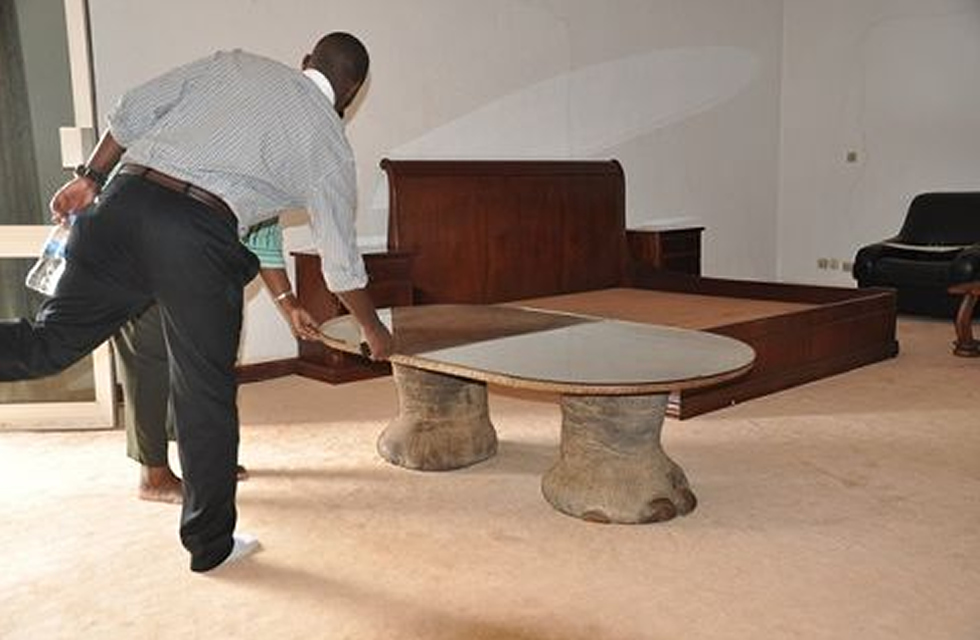Some people know former president Juvenal Habyarimana’s residence as from July 5, 1973 to April 6, 1994 and Habyarimana himself as the man behind the 1994 genocide against the Tutsi.
Visiting the palace that is located two kilometres from Kigali International Airport, the former presidential palace in Kanombe is tale of opulence, but also a secret cult of African voodoo and self-destruction.
One of the things that many Rwandans don’t know, until they get a guided tour of the palace, is that Habyarimana used to have a sacred voodoo shrine next to the his private chapel.
According to guides, Habyarimana was a staunch catholic but he always turned to the sacred voodoo shrine to get answers to his leadership and future. Many Rwandans at the time only used to hear about it in rumors that their president was voodoo worshipper.
The kind of mindset is seen in one of his greatest possessions, the python- which was believed to be at least 6 metres or more, that had a special pool under a mahogany tree in his compound.
The mystery of Habyarimana’s death may be explained by forensic evidence, but the fact that his plane landed exactly near the pool habiting his pet snake, which many believed possessed his magical powers, is one of the things that will make you wonder if he didn’t fall out of favor with his voodoo practices.
Like many presidential suits, the palace has an inbuilt armory where it is said Habyarimana kept his arms. But the difference is that the armory was one of the secret rooms in the palace, situated inside the bedroom of his sons, who might not have known about its existence.
The only way to the armory was through a secret door, which could be accessed through the president’s bedroom and incase of any attack he would disappear through the kids room and the enemy wouldn’t even think of it.
The debris for the Falcon 50 presidential plane that went down on 6th April 1994 is also on display at the museum in its original form since the accident.
Apparently the palace has turned into a tourist attraction and a source of historical information and study for Rwandans today.
Youngsters use the palace tennis court and a swimming pool for extra curricula activities and many Rwandans have used the beautiful gardens for wedding events and relaxation.

Leave a Reply